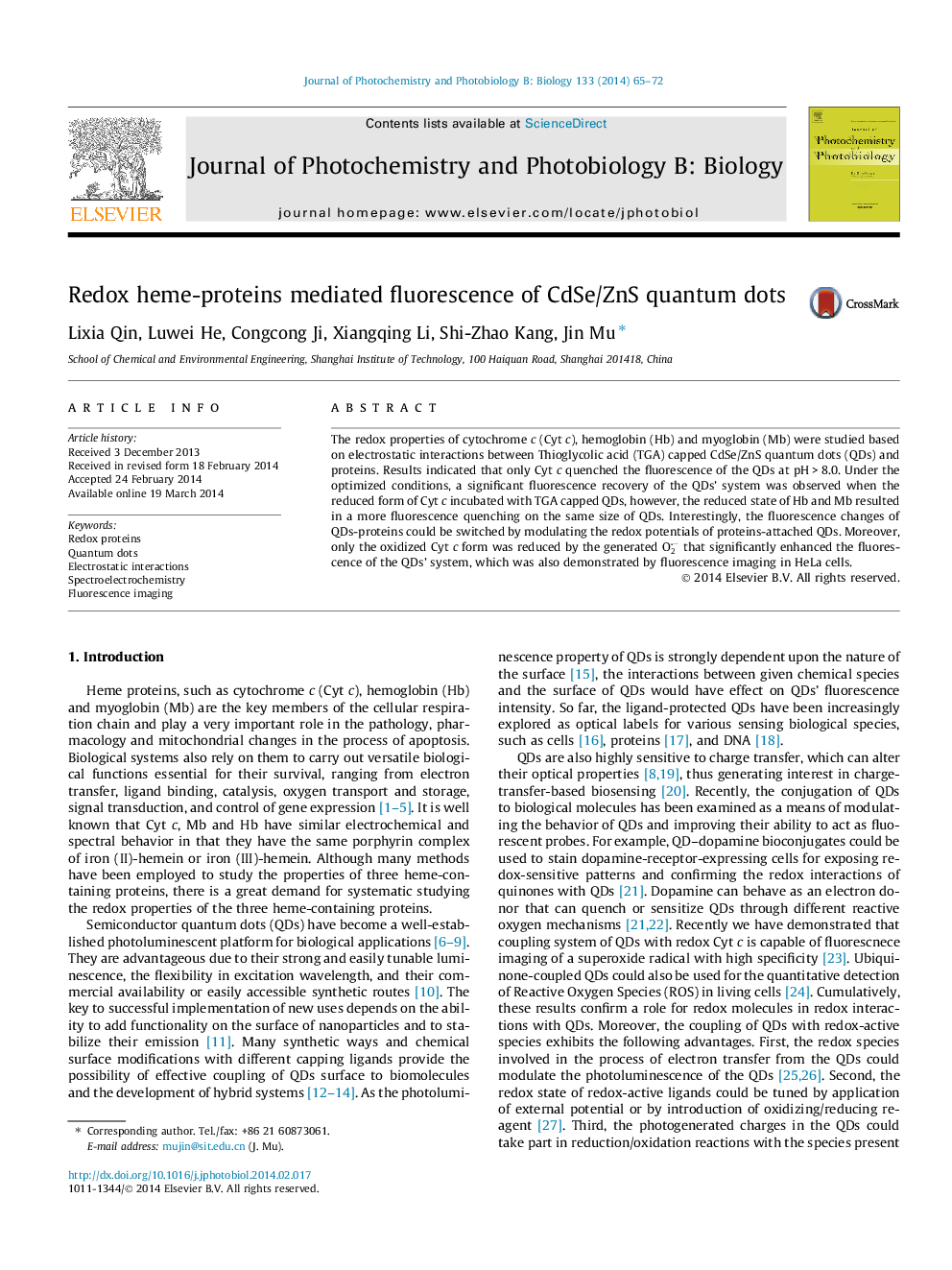| Article ID | Journal | Published Year | Pages | File Type |
|---|---|---|---|---|
| 30086 | Journal of Photochemistry and Photobiology B: Biology | 2014 | 8 Pages |
•Three proteins have different redox properties on QDs surface.•Fluorescence recovery was observed when reduced Cyt c incubated with QDs.•Fluorescence changes of QDs-proteins were modulated by spectroelectrochemistry.•Fluorescence imaging of QDs-proteins was demonstrated in HeLa cells.•This platform might be extended to study other redox proteins.
The redox properties of cytochrome c (Cyt c), hemoglobin (Hb) and myoglobin (Mb) were studied based on electrostatic interactions between Thioglycolic acid (TGA) capped CdSe/ZnS quantum dots (QDs) and proteins. Results indicated that only Cyt c quenched the fluorescence of the QDs at pH > 8.0. Under the optimized conditions, a significant fluorescence recovery of the QDs’ system was observed when the reduced form of Cyt c incubated with TGA capped QDs, however, the reduced state of Hb and Mb resulted in a more fluorescence quenching on the same size of QDs. Interestingly, the fluorescence changes of QDs-proteins could be switched by modulating the redox potentials of proteins-attached QDs. Moreover, only the oxidized Cyt c form was reduced by the generated O2- that significantly enhanced the fluorescence of the QDs’ system, which was also demonstrated by fluorescence imaging in HeLa cells.
Graphical abstractThe fluorescence I and II could be switched by modulating the redox potential of three proteins-attached QDs, which opens up the possibility to “read-out” the redox state of biological species of interest. Interestingly, only the oxidized Cyt c form was reduced by the generated O2- that significantly enhanced the fluorescence of the QDs’ system, which was also demonstrated by fluorescence imaging in HeLa cells.Figure optionsDownload full-size imageDownload as PowerPoint slide
